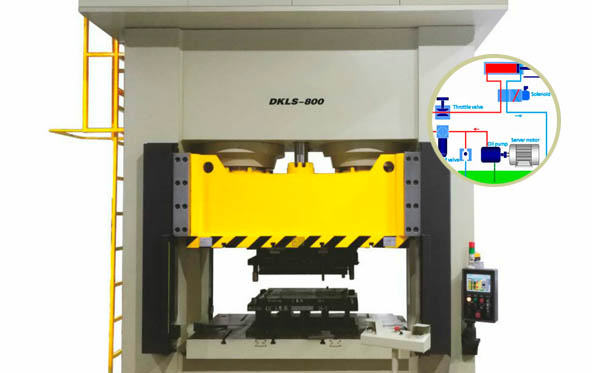Hydraulic Press: Relationship Between Working Pressure, Size and WeightUpdate:2025-01-07 Hits:121
Following are relationships between the working pressure, size and weight of a hydraulic press.1. The impact of working pressure on the structural size of the fuselage
• Frame size
The greater the working pressure of the hydraulic press, the greater the stress on the fuselage frame. In order to ensure that the fuselage can withstand these stresses without deformation or damage, the size of the frame needs to be increased accordingly. For example, large hydraulic presses with high pressure usually use thicker columns and wider beams to enhance the stability and strength of the overall structure. Large hydraulic presses above 10,000 tons have much larger column diameters and beam thicknesses than ordinary small hydraulic presses.

• Cylinder size
The working cylinder is a key component for generating hydraulic pressure. An increase in working pressure will increase the pressure inside the working cylinder. According to the pressure formula, when the force is constant, the pressure is inversely proportional to the force area. Therefore, in order to withstand higher pressure, the inner diameter of the working cylinder needs to be increased and the cylinder wall needs to be thickened. For example, if the hydraulic press with a pressure of 100 tons is upgraded to 500 tons, the diameter of the working cylinder may increase several times, and the thickness of the cylinder wall will also increase significantly.
2. The impact of working pressure on the weight of the fuselage
• Increased material usage
As the working pressure increases, the components of the hydraulic press need to be manufactured with higher-strength materials, and the density of high-strength materials is usually larger, which leads to an increase in the weight of the components. For example, in order to withstand high pressure, the fuselage frame may need to be upgraded from ordinary steel to high-strength alloy steel, and the material of the working cylinder may also be upgraded from ordinary cast iron to cast steel or forged steel. The density of these materials is greater than the original material, which increases the overall weight of the hydraulic press.
• Increased structural reinforcements
In a high-pressure working environment, in order to further enhance the stability and strength of the fuselage, some reinforcements such as ribs and support beams need to be added. The increase of these reinforcements will also increase the weight of the hydraulic press. For example, in the fuselage of some large hydraulic presses, a large number of reinforcements are set inside to disperse stress and ensure the safe operation of the fuselage under high pressure, and the weight of these reinforcements cannot be ignored.
In summary, the working pressure of the hydraulic press is positively correlated with its size and weight. The greater the working pressure, the larger the size of the hydraulic press and the heavier the weight. However, this is only a general trend. In actual situations, it will also be affected by many factors such as the design structure, materials used, and manufacturing process of the hydraulic press.

